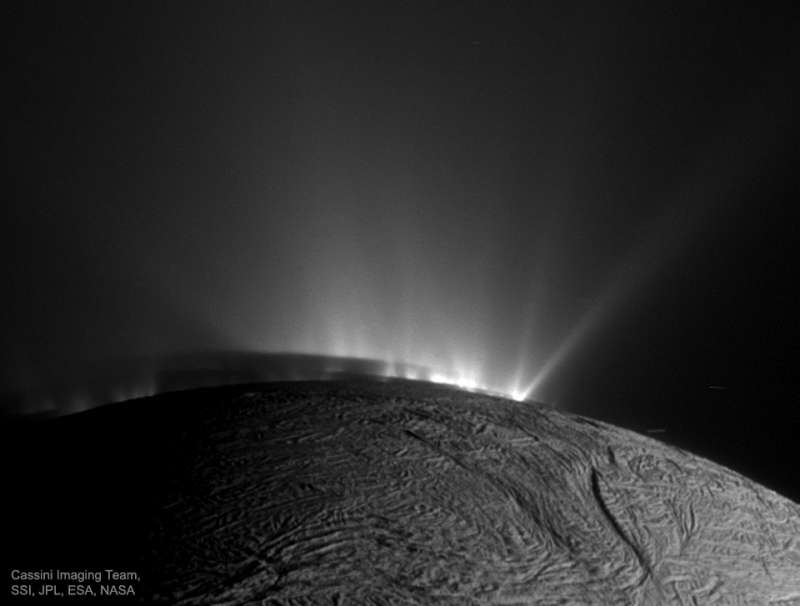Life Enabling Plumes above Enceladus

Explanation:
Does
Enceladus have underground oceans that could support
life?
The discovery of jets spewing water vapor and ice was
detected by the Saturn-orbiting
Cassini spacecraft in 2005.
The origin of the water feeding the jets, however, was originally unknown.
Since discovery, evidence has been accumulating that
Enceladus has a deep underground sea,
warmed by
tidal flexing.
Pictured here,
the textured surface of
Enceladus
is visible in the foreground,
while rows of plumes rise from ice fractures in the distance.
These jets are made more visible by the
Sun angle and the encroaching shadow of night.
A recent fly-through has
found
evidence that a plume -- and so surely the
underlying sea -- is rich in molecular
hydrogen, a
viable food source for
microbes that could potentially be
living there.
Authors & editors:
Robert Nemiroff
(MTU) &
Jerry Bonnell
(USRA)
NASA Web Site Statements, Warnings,
and Disclaimers
NASA Official: Jay Norris.
Specific
rights apply.
A service of:
LHEA at
NASA /
GSFC
& Michigan Tech. U.

